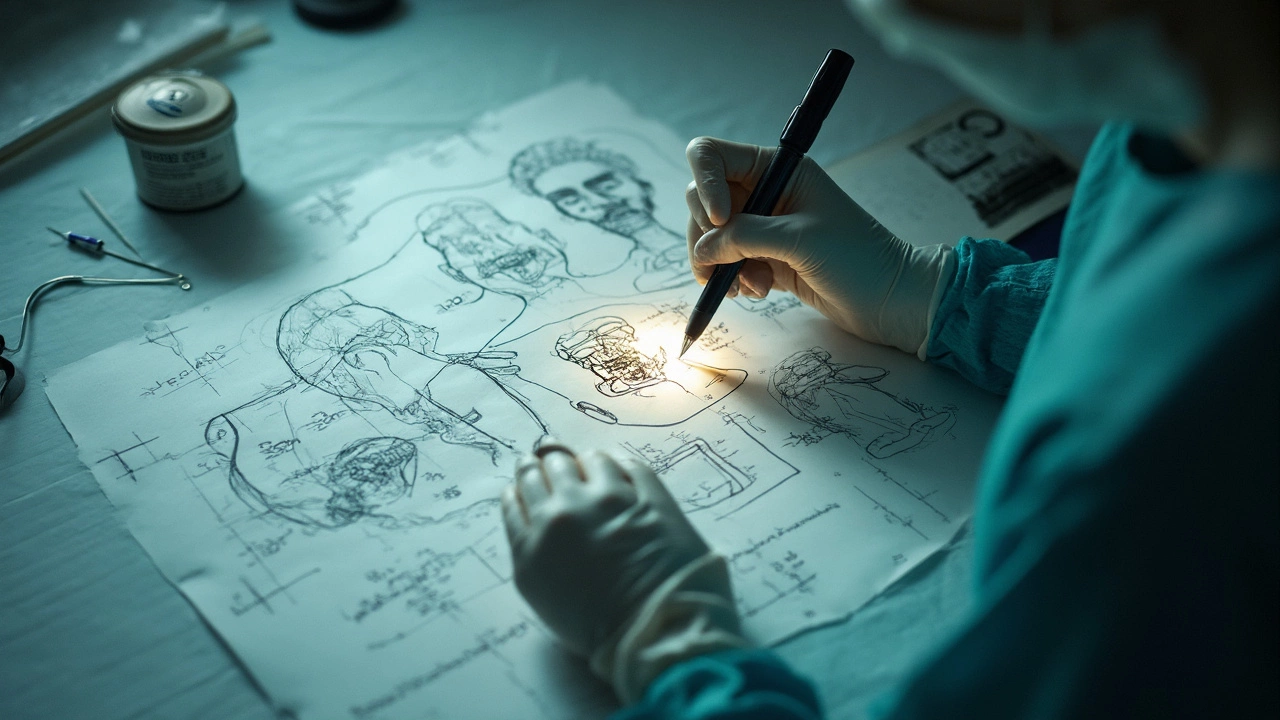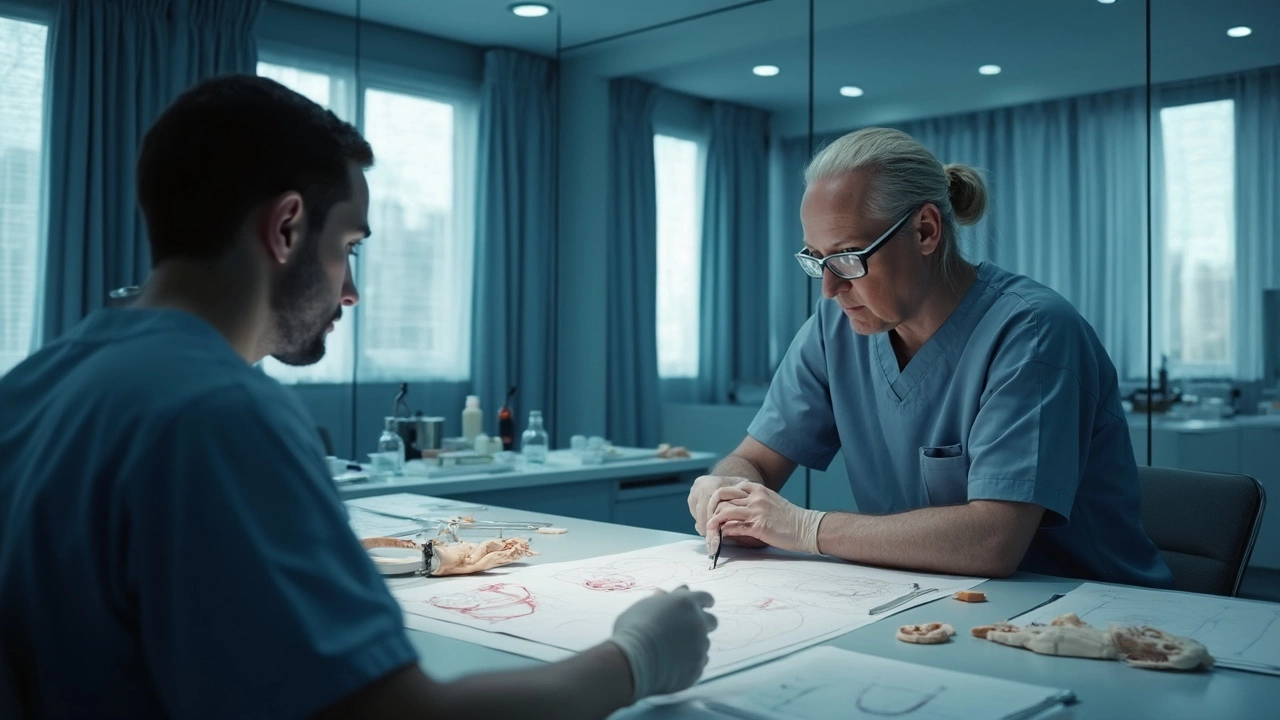Ever met someone who got a little something "done" and nobody could tell? That’s when you know a surgeon is truly talented. But not every cosmetic procedure is just a nip and a tuck. Some push even the most skilled surgeons to their limits. Ask any experienced plastic surgeon privately, and they’ll tell you—some procedures haunt their dreams, not because of the drama you see on TV, but because these surgeries demand everything they've got: precision, patience, and nerves of steel. So, what’s the hardest cosmetic surgery out there?
The Reigning Challenge: Rhinoplasty and Why It’s the Hardest
When you ask experienced surgeons about the most challenging cosmetic surgery, most will say one word: rhinoplasty. That’s the fancy way of saying nose job. On paper it might sound routine, even common. But the nose is a small structure packed with intricate cartilage and bone, tiny changes make a huge difference, and mistakes are almost impossible to hide. The nose takes center stage on your face, and there’s nowhere to camouflage a problem.
Here’s where it gets wild: studies say up to 15% of patients who get a nose job end up needing revision surgery. That’s more than any other major cosmetic procedure. Tiny tweaks to a millimeter can make a big difference. Too much cartilage removed? Breathing can suffer. Not enough? The shape just looks odd. Healing varies so much from person to person that even a perfect surgery can end with an unexpected result.
Even more intense—more than half the nose jobs done in big cities, according to some surgeons, are fixing mistakes from past surgeries. Not only does the surgeon need to be a master of anatomy, but they must also be artists, sculptors, and sometimes, magicians. There is a saying among experts: “The better your rhinoplasty gets, the harder the next one becomes.” Don't expect shortcuts here. Even tools are tricky—ultrasonic rasps, piezo devices, micro scissors—the field is always evolving, and surgeons must adapt fast.
Surgical Skill, Patient Demand, and Anatomy: What Makes a Surgery So Tough?
So why is rhinoplasty reputed to be even harder than a facelift or breast augmentation? It comes down to three things: anatomy, patient expectations, and what happens if things go wrong.
- Anatomy: The inside of the nose is a maze of cartilage, bone, and delicate tissue. Surgeons have to carve, reshape, and sometimes rebuild all of that through tiny incisions. One little slip? End of story.
- Expectations: Patients expect perfection. Everyone looks in the mirror every day; even a 1-millimeter change will be noticed—sometimes adored, sometimes hated. Social media and filters have also raised the bar to nearly impossible levels.
- Revisions: If a second surgery is needed, the challenge multiplies. Scar tissues, missing cartilage, and distorted anatomy require even more skill and creativity. Many surgeons refuse revision procedures or charge double—or more—because of the risk.
Surgeons not only need technical prowess but also communication superpowers. They must explain risks in plain English and set realistic expectations without crushing dreams. It's not rare for people to bring in celebrity photos or AI-modified selfies, asking for the impossible.
Here’s another jaw-dropper: In South Korea, considered the nose job capital of the world, teens sometimes get rhinoplasties as graduation gifts. The local obsession has fueled not just surgical advances but a whole industry of nasal implants, tip plumping injectables, and custom 3D-printed guides for visualizing outcomes—all making the field even more daunting.

Beyond the Nose: Honorable Mentions in Challenging Cosmetic Surgeries
Surgeons tap their feet and look up at the ceiling if you ask about other hard ones. Face transplant? Sure, it makes headlines, but not everyone is up for it (or qualified). But here’s what professionals mention as runner-ups for "most difficult":
- Facial Reconstructive Surgery: Whether it’s correcting trauma, burns, or birth defects like cleft lips, these surgeries aren’t about beauty alone. Surgeons rebuild faces, sometimes using bone and tissue from ribs or thighs. Success is measured not only by appearance but also by function: smiling, eating, or even breathing.
- Microvascular Free Tissue Transfer: It sounds technical because it is. Surgeons take tissue from one part of the body and move it to another—let’s say arm to face—then use a microscope to stitch arteries so fine they’re thinner than spaghetti. This is the stuff of operating-room marathons, where one blink means disaster.
- Body Contouring After Massive Weight Loss: When people lose 100 pounds or more, they’re thrilled until they’re left with too much extra skin. Surgeons perform marathon procedures to lift, tuck, and trim—the human canvas is constantly changing, healing can be unpredictable, and patients need crazy stamina both emotionally and physically.
- Total Facelift and Neck Lift: While a traditional facelift might sound routine, the advanced techniques now being used (like deep-plane or sub-SMAS lifts) are tough to master. Any slip in technique and you get the dreaded “pulled look.” Add in nerve preservation and working close to vital structures—it’s a pressure cooker for even seasoned surgeons.
Each surgery on this list can take many hours, sometimes with a surgical team tag-teaming through shifts. Mistakes can be permanent, and even the smallest error can mean months of revision surgeries or nerve pain.
Inside the Operating Room: The Hidden Stresses and Surgeon Realities
It’s easy to forget, but cosmetic surgeons face pressure you probably don't see on TikTok. No room for error, long hours standing, eyes glued to microscopes, all while a patient is trusting you to make them look—not just different—but better. Sleep deprivation is common, especially for multi-procedure sessions. Can you sew a hair-thin thread after being up all night? Surgeons have to. Some experts admit they practice suturing on oranges or pigs’ feet just to keep their hands sharp.
Many surgeons train for over a decade before they do difficult cases unsupervised. Big teaching hospitals use simulators, cadaver labs, and 3D-printed practice models now, but nothing really prepares you for your first difficult case solo. It’s no coincidence that the surgeons who take on the hardest jobs are the ones still obsessing over anatomy books and attending workshops at 55 years old.
| Cosmetic Surgery | Revision Rate (%) | Average Surgery Time (hours) | Complexity Rating (10) |
|---|---|---|---|
| Rhinoplasty | 15 | 2-4 | 10 |
| Facelift | 4 | 4-6 | 8 |
| Breast Augmentation | 2 | 1.5-2 | 6 |
| Body Contouring | 7 | 5-8 | 9 |
| Microvascular Transfer | 5 | 6-12 | 10 |
The bottom performers in complications are not always the most obvious ones. Some botched jobs never make the news—doctors quietly fix their own mistakes, and patients just hope nobody notices the changes.
The psychological toll is another shadow over the field. Surgeons have to manage their own anxieties as well as their patients’. Burnout and depression aren’t rare in the specialty, and some leave the high-pressure jobs behind to teach or consult after a few tough cases.

Thinking About a Difficult Cosmetic Surgery? Tips for Choosing the Right Surgeon
If you’re thinking about a most difficult cosmetic surgery, there are a few must-dos. Don’t just trust before-and-after photos. Anyone can post a good one; ask to see a portfolio across ages, ethnicities, and revision challenges.
- Double-Check Credentials: Choose a surgeon board-certified by a major association (like the American Board of Plastic Surgery in the USA). Check how much of their practice is devoted to the specific surgery you want.
- Be Honest About Your Goals: A good cosmetic surgeon will ask tough questions: "Why do you want this?" Don’t take offense. Red flags fly for surgeons if they sense body dysmorphia or expectations that even Photoshop couldn’t deliver.
- See the Facility: Ask for a tour of the operating room or surgery center. See the cleanliness and staff’s professionalism for yourself. A good surgeon won’t mind showing you around.
- Review Recovery and Follow-Up Plans: Difficult surgeries mean careful aftercare. Make sure your surgeon reviews all risks—even the rare ones—and outlines a recovery plan, including what happens if a revision becomes necessary.
- Ask About Revision Policy: No one likes to think about going back for a second operation. If statistics say 15% need revision, know if your surgeon has a policy (financial and practical) for follow-ups.
Here’s a pro tip: Good surgeons often have a waitlist. If you’re offered a last-minute slot “because someone canceled,” think twice and do extra research. The best are usually booked up—and they want you to take your time, too.
Finally, don’t let nerves push you into a decision. Sleep on it, and, if possible, talk to others who’ve had the same surgery with the same doctor. Honest stories from real patients are worth more than all the glowing reviews you’ll see online.
